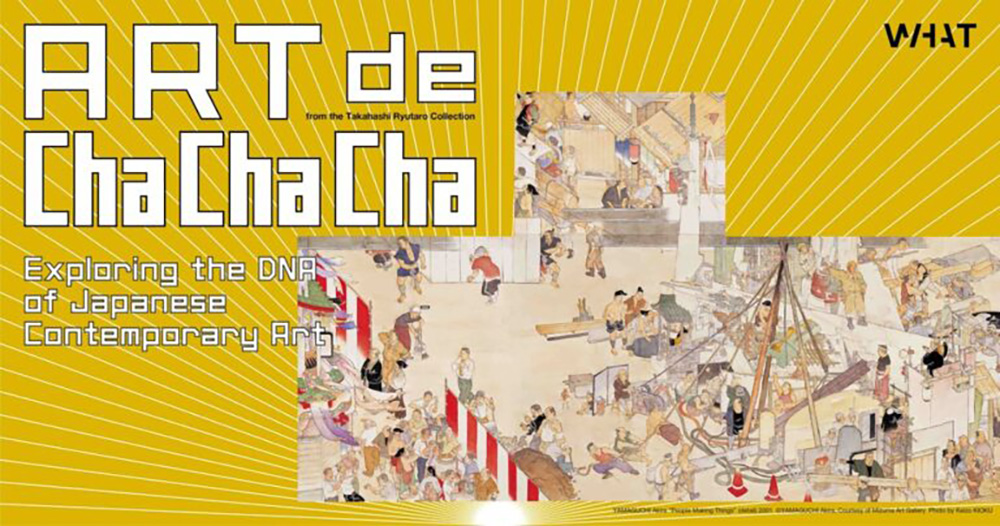Japan Syndrome - Mito Version
2012 - Film & Video (Film & Video)
48:28 minutes
Tadasu Takamine
The video work Japan Syndrome is a continuation of his lines of inquiry, taking post-Fukushima Japan as a case study. The work constructs a theatrical space in which the conflict-filled life sphere of post-Fukushima Japan, and perhaps beyond it, is reenacted in a minimal yet condensed fashion. To conceive this work, the artists has recorded real conversations he had with shop employees in Kyoto, Yamaguchi and Mito from 2011 to 2013, which have been then reenacted as performances in a studio, and recorded as the final form of this piece. In each re-enactment a protagonist subtly asks a shopkeeper or waiter probing questions regarding the origins of certain products: where fish were sourced, whether fruit has been tested and what is deemed safe to eat. With always an extraordinary politeness, the protagonists discuss radiation level check system, government responsibility, decline of the region (as in the Mito version shared here, closer to the source of radiation). In a very minimal and simple way, Japan Syndrome examines the consequences of the radiation for Fukushima, and Japan as a whole, which remain invisible as immeasurable, but they nevertheless encroach on everyday life. It also reveals the constant changes in the social conditions of the country and the population’s consciousness after Fukushima disaster, addressing how individuals resist to the growing collective consciousness and social oppression, towards the spectre of an uncertain future and the unquantifiable damage that has been caused.
Tadasu Takamine is one of the most controversial, thought provoking, and irreverent media, video and installation artist working in Japan. He began as a member of the influential Japanese multimedia-performance group Dumb Type, which has existed since the 1980s and investigated contemporary biopolitics. In a deep engagement with his own physicality and personal life, he has now been active for over a decade as a freelance director and artist, and has devoted himself to a theatre practice that he develops experimentally in workshops in dialogue with local participants. Both in the theatre as well as in artistic projects, he grapples with gnawing social questions provocatively and with dark humor. Born in Kagoshima, Japan, in 1968, he has exhibited extensively throughout Asia, North America and Europe, as well as Australia, Israel, Mexico and South Africa. He has been in residency at Jerusalem Center for the Visual Arts, Banff Center for the Arts and Saw Video Centre for the Media Arts, Ottawa among others.
Colors:
Related works sharing similar palette
» see more

© » THEARTNEWSPER
‘Gangbusters’ domestic economy sees prices rise at India Art Fair Art market Museums & heritage Exhibitions Books Podcasts Columns Technology Adventures with Van Gogh Search Search India analysis ‘Gangbusters’ domestic economy sees prices rise at India Art Fair The region’s previous art market boom and bust has some at the New Delhi event questioning whether this new wave can be sustained Kabir Jhala 2 February 2024 Share A visitor at Chemould Prescott Road's stand at India Art Fair 2024 Courtesy of India Art Fair Quiet confidence has turned into bullishness at the 15th edition of India Art Fair (IAF) in New Delhi (until 4 February), South Asia’s largest commercial art event...

© » SOUTH CHINA MORNING POST
Enlarged windows, glass bricks and balustrades allow light to flow through Hong Kong village home after renovation | South China Morning Post Advertisement Advertisement Architecture and design + FOLLOW Get more with my NEWS A personalised news feed of stories that matter to you Learn more When work was thin during the pandemic, an interior designer tapped her employees to overhaul her family’s three-storey villa with garden in Sai Kung, Hong Kong...

© » KADIST
Baktash Sarang Javanbakht
2014The series refers to the militarization in Iran and surrounding countries and criticizes it by naming it reproduction of failure...
Related artist(s) to: Tadasu Takamine » Koki Tanaka, » William Kentridge, » Aernout Mik, » Ana Torfs, » Ann Lislegaard, » Arin Rungjang, » Cai Guo-Qiang, » Danh Vo, » Emiko Kasahara, » Joost Conijn
» see more

© » KADIST
Koki Tanaka
2009Walking Through is one of a series of videos—sometimes humorous, often absurd—that record the artist’s performative interactions with objects in a particular site...

© » KADIST
Arin Rungjang
2017246247596248914102516… And then there were none narrates a semi fictional account centered around the ambiguous history of the Democracy Monument in Bangkok, and on the aftermath of the 1973 demonstration of 400,000 people who marched against the military junta from Thammasat University to the monument...

© » KADIST
Koki Tanaka
2013This artwork was part of a group of projects presented in the Japanese Pavilion at the Venice Biennale in 2013...
Related works found in the same semantic group
» see more

© » KADIST
Shimpei Takeda
2012While still living in New York, shortly after the nuclear power plant disaster, Shimpei Takeda heard an NPR interview with a survivor living in temporary housing in Fukushima...

© » KADIST
Akira Takayama
2015In Akira Takayama’s work Happy Island – The Messianic Banquet of the Righteous , five video screens perpendicular to the floor feature footage of cows grazing and resting in the rolling hills of a farmland...




